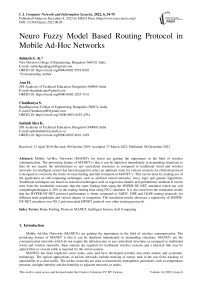Neuro Fuzzy Model Based Routing Protocol in Mobile Ad-Hoc Networks
Автор: Siddesh G.K., Anu H., Chaithanya S., Sathish Shet K.
Журнал: International Journal of Computer Network and Information Security @ijcnis
Статья в выпуске: 6 vol.14, 2022 года.
Бесплатный доступ
Mobile Ad-Hoc Networks (MANETs for short) are gaining the importance in the field of wireless communication. The promising feature of MANET is that it can be deployed immediately in demanding situations as they do not require the infrastructure or any centralized structures as compared to traditional wired and wireless networks.An intelligent system has been designed to select an optimum route for various contexts.An efficient protocol is designed to overcome the limits of route finding and link formation in MANET’s. This can be done by making use of the application of soft-computing techniques such as artificial neural networks, fuzzy logic and genetic algorithms. Traditional techniques are based on statistical techniques such as regression models and probabilistic methods.It can be seen from the simulation outcomes that the route finding time using the HYPER-NF-NET simulator which use soft computingtechniques is 20% to the routing finding time using NS-2 simulator. It is also seen from the simulation results that the HYPER-NF-NET protocol performance is better compared to AODV, DSR and OLSR routing protocols for different node population and various degree of congestion. The simulation results showcase a superiority of HYPER-NF-NET simulator over NS-2 and associated HFNET protocol over other existing protocols.
Route Finding, Protocol, MANET, Intelligent System, Soft Computing
Короткий адрес: https://sciup.org/15018555
IDR: 15018555 | DOI: 10.5815/ijcnis.2022.06.05
Текст научной статьи Neuro Fuzzy Model Based Routing Protocol in Mobile Ad-Hoc Networks
Mobile Ad-Hoc Networks (MANETs) are gaining the importance in the field of wireless communication. The promising feature of MANET is that it can be deployed immediately in demanding situations. MANETs are the communication networks which do not require the infrastructure or any centralized structures as compared to traditional wired and wireless networks. Base stations are required for traditional wireless systems and a physical link may be optical fiber or coaxial cable is required for the wired systems.
MANETs has been inpractice since many years and have developed recently into more mature and systematic technology. The typical applications of ad-hoc networks include tracking of enemy tank in the war field, tracking of automobiles in a strict traffic. The ad-hoc networks are used to transmit the atmospheric parameters such as temperature, pressure, sunlight intensity and the humidity to adjacent networks or nodes.
In the research work popular existing protocols has been considered and the best features from each of these has been derived. Other essential ingredients based on stochastic models, learning methods etc. have been integrated into the functioning of the network. This surpasses the existing systems by a large factor. Travelling through the taxonomy of the protocols in existence, the following types have been successfully integrated through the web of soft-computing.
• Pro-active (table-driven) routing
• Reactive (on-demand) routing
• Flow-oriented routing
• Hybrid (both pro-active and reactive) routing
• Hierarchical routing protocols
• Backpressure routing
• Power-aware routing protocols
2. Motivation behind this Work
3. Contribution of Paper
4. Related Work
Every node in MANET can join, quit, and move all through the organization freely. This versatility brings about a profoundly powerful climate, which affects packet routing. Subsequently, quite possibly the most troublesome issues in MANET is proficient packet routing. Routing's goal is to get packets to their final destinations by guiding them through the communication network. Various protocols are designed to determine the most effectual route from source to destination, with a definitive objective of establishing an systematized route and communication exchange within MANET. shortest path will be the most suitable path, will be the which can be chosen from a number of different pathway, or the dependable pathway, for a reduced amount of congestion with a added reliable network connection.
The task of the routing protocol is restricted not just by the prerequisite to interface MANET nodes for exchanging of information yet additionally by the need to keep data streaming at a satisfactory level consistently. In some explicit circumstances, when mobility of the nodes rapidly increases which affect the performance of the protocol, the available MANET routing protocol which was created to address the future case, cannot be used to assist in this situation. A MANET that uses only one routing protocol is unable to benefit from the advantages of several routing systems. The research concentrated on analyzing methods rather than offering solutions when they broke down. Hence have to meet the goal of providing acceptable levels of service to users with MANET optimization.
The protocol that determines the shortest path was used to create the optimized routing protocol MANET. The routing protocols were in a while developed and optimized using context-aware metrics. To aid optimization, prediction, modeling, and AI approaches were used. Researchers have devised optimum routing protocols, with the major intention of being to meet specific protocol objectives. As a result, several routing systems associate the most appropriate way with the quickest, most consistent, or self-organized path. The self-managing protocols, which include mechanism for self-protection, self-curative, self-configuration, and self-optimization. Despite the fact that their goals are varied, As a result, the explore for the efficient routing protocol that offer the best path and meets the total objective continues. But there is need for routing protocol and handle and resolve all of these objectives at the same time, although few protocols attempt this, there is a requirement for a strategy that can deploy current algorithms depends on the network’s demands is required.
The MANET models were created based on network performance measurements. MANET performance models were created using three techniques: neural networks, neuro-fuzzy models, and empirical equations. In the view of negligible Mean Square for the exhibition boundaries, a quantitative correlation of GA and PSO in advancing MANET it is introduced to defeat convention. This examination evaluates the different advancement approaches to find the best strategy for MANET improvement. The framework educates the organization to change conventions to keep up with satisfactory organization execution with a selective self-arranging strategy for deciding the best directing convention in view of organization history. The normalized network performance factors are passed through a cost minimization function to obtain the network's best cost.
Cost minimization measurements are used as a evaluation tool to analyze the performance of the HYPER-NF-NET optimization system. The models for the HYPER-NF-NET system, on the other hand, are developed using AI Neuro-fuzzy technique. The benefit of this approach is that it does not require any primary routing system and be included into any Ad hoc multicast routing protocol. The simulation results show that the route finding time utilising the HYPER-NF-NET simulator, which employs soft computing techniques, is 20 percent faster than the NS-2 simulator.
The majority of the mobile ad hoc network (MANET) community uses simulation as their primary research method. They allow for a large number of nodes and repeatable environmental variables. Though the usage of simulation has grown, so has the trustworthiness of simulation results [1]. Since the typical simulation study hazards, sharing their findings with the public in the hopes of increasing the credibility of MANET simulation-based investigations. Because of the expensiveness in terms of processing time and memory, [2] promote JiST/SWANS as a feasible option by demonstrating that it generates identical simulation results as NS-2 in less time and with less memory. [3]discusses in detail how soft computing, in combination with fuzzy logic and neural networks, may aid in the solution of complicated real-world issues with human-like intelligence. The author goes into great detail about how these disciplines might be used to extend the intelligent computing paradigm.
Fuzzy inference technique is used to decide the node’s score [4], believes the Battery Remaining, Number of Neighbors, Number of Members, and Stability. The bunch heads are picked in a conveyed manner utilizing the most forward-thinking information in regards to neighbor hub status. [5] provides an excellent overview of several routefinding optimization strategies based on soft computing technologies such as genetic algorithms. They described how genetic principles can be used to choose the best approach. [6]Aims to assess several techniques in the field that are focused on power awareness and battery life. The energy-aware sensitive routing methods were created using two intentions: increasing node life time and to decrease complete transmission power for each connection in Ad hoc networks in. which meant that each mobile host’s power consumption rate had to be equally divided. [7] devised routing algorithms that used an energy-aware context measured to choose the path with the lowest price and enough resources.Various strategies for extending the battery's life are covered, including adaptive idling modes. a new technique in routing mechanisms that monitors the pace at which energy is drained in communication activities in order to decrease energy consumption at the node endpoints. Although this exercise adds to the network management overhead, it aids in the efficient management of power usage. [8] in his e-book concentrates on building intelligent industrial systems and networks based on various artificial intelligence techniques such as Semantic Nets, Petri Nets, and Simulated Annealing.
[9] gives an excellent exposition on various optimization techniques in route finding based on soft computing technologies such as genetic algorithms. They have discussed how the best route can be established based on hillclimbing techniques.[10] give a concise exposition of AODV. The concept of distance vector in routing is explained in details and comparisons are drawn across various types of protocols to substantiate the superiority of AODV over others under constrained conditions. [11] Describe Link State Routing and the use of optimization techniques to create a MANET that is actually efficient. Neural network techniques to offer a scheme for estimating mean per-packet one-hop delays [12]. The nodes then use the projected one-hop delays to take part in routing information broadcasting using tapped-delay-line multi-layer perception network or a tapped-delay-line radial basis function network. For prediction the mean delay time series alone, or along with matching traffic loads are used as input. To investigate network performance, an application-layer multithreaded programme is utilized. With shifting application data quantities and varied combinations of network parameters[13], the behavior of two key performance indicators – delivery ratio and average round trip time was explored. The flexibility of various types of protocols and routing systems in relation to MANETS constantly changing topology It is an exceptionally important exposition that provides a comprehensive understanding of network dynamics in relation to protocol adaptation to current topology. [14] built in accordance with established or commonly used protocols Routing measures they are classic hop count metre and context-aware metrics have been used to optimize MANETs. The most efficient path picking the shortest path is one technique to use the shortest hop count. [15] by choosing one of the several paths disclosed during the route discovery process.[16]gives an analytically optimized technique to reduce routing energy overhead. The [17] reactive routing protocol was developed using the bandwidth-aware metric. The paper[18] used the congestion-aware metric to create a distance vector routing system. To improve the outcome, The routing metric was combined with many context-aware metrics. To deal with the challenge of customizing the ZRP and giving the optimal conduct for a meticulous network at any moment, paper [19] bring together mobility-, contention-, and congestion-aware measures. Prediction provides a first impression of how network elements will behave ,was Developed an equation to forecast to the connection status of a mobility aware quantity for a future time period. An empirical model was created in [20] to describe the connection between the projected retort indices using significant factor. Packet delivery ratio, end-to-end delay, routing overhead ,and Jitter [21]established a mathematical framework for modeling contention of routing devise, with mobility and channel model ,was analyzed using this approach. Model-based prediction is a fascinating field of optimization. [22] used this technique to construct a framework for modeling MANET. The framework incorporates key functional aspects, Each one is correspond to a different matrix. A traffic data and network operation parameters were used to develop the mathematical network model. This can subsequently be used to forecast upcoming network metrics using only the network gateway's traffic capacity settings and the mathematical cost function. [23] Offers the Routing Strategy Automation technique, which allows each source node to robotically determine the routing approach based on requests, and then each intermediary node to auxiliary adapt the routing approach to optimize network resources utilization. A context-based programmable structure and the capability for protocol operation is presented in papers [24] MANET nodes to dynamically download and activate the appropriate service. The nodes will analyze the preconditions for downloading and activation are not available on all nodes. This also leads to some network self-optimization. Artificial Intelligence has become increasingly important in optimization. It supports a range of optimization strategies for solving MANET routing problems[25]. To estimate average one-hop delays per packet neural network were formed, the nodes then used the projected one hop delays to help with routing information dissemination. An ad hoc hierarchical network was utilized as predictor [26] for An Adaptive Neuro-fuzzy Inference system to solve the route error optimization problem swarm intelligence is a reliable, decentralized, and self-organized routing technique. [27]
5. Hyper-NF-NET Design5.1. HYPER-NF-NET Optimization System
used particle Swam optimization in volatile MANET environment to gather the variance of network topology behavior and suit the requirement of explicit multimedia traffic. [28] geographical location information of node is utilized to establish network clustering with less energy consumption. [29] exploited Swarm intelligence methods Ad hoc networking to create congestion conscious ANSI routing protocol for both hybrid Ad hoc network to pick next hops. [30] discuss communication related issues in terms of statistical metrics such as regression, best fit procedures and statistical distribution patterns such as Poisson and Gaussian. This paper is highly useful in building network models. [31] conduct an extensive survey on various network models that have the factor of mobility as the foundation. MANET being highly mobile the study of the various mathematical models gives a deep understanding of how to manage MANET’S. [32] explains in detail the role of model and the concepts behind it using mathematical techniques. It throws light on the important of building sensible real-world models and how these models can be useful in problem solving.
Wireless networks should provide an acceptable level of service to their users. Performance modelling and evaluation will play a key role in designing and monitoring those processes that ensure the successful deployment of the network. Network traffic and characteristics should be analyzed and controlled to achieve the desired service. Specific modelling and design tools are required to design an optimized system.
The aim of the research is to design a smart system using soft computing techniques. The objective of soft computing is to build an artificial intelligence, known as computational intelligence, develop smart machines and solve non-linear and mathematically modelling system problems [33]. A smart system could be created by combining smart techniques such as fuzzy logic, neuro-computing techniques. A smart system will then be able to learn from those experiences that lead to the achievement of the system's goals. A smart system senses its environment for each situation and learns the right action.
The proposed Hyper-NF-Net optimization system has taken contributions from multiple fields to create the ultimatesmart system. Multiple fields include field of communication, field of modeling and field of optimization. A wireless MANET represents the first field, communication field, whereas AI describes the second and third fields. The objective of the proposed system is to select MANET’s optimal context based routing protocol. Thus, designing the optimization system for HYPER-NF-Net routing protocols requires specific tools for simulation, modeling and optimization. Therefore, to create an optimum system, different modelling and monitoring techniques must be tested.Together with each other, the four main components simulator, modeler, optimizer and protocol switcher are used to achieve the proposed system’s design.
The different elements needed to create the optimization system for HYPER-NF-NET routing protocols are discussed below.
-
• Simulator: It simulates MANET in various contexts and in different scenarios collects performance metrics. The representative value will then be determined for each performance metrics.
-
• Modeller:It uses various modelling techniques and in accordance with scenarios generated MANET
performance models for each routing protocol.
-
• Optimizer:It uses performance-based optimization techniques to optimize MANET performance. It then
suggests for the current context the optimum routing protocol.
-
• Protocol Switcher: It implements the technique of switching between MANET protocols.
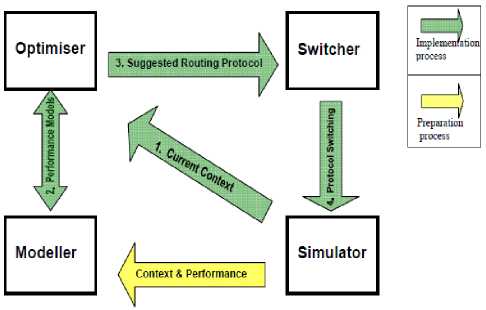
Fig.1. HYPER-NF-NET routing protocols optimization system block diagram
In the forthcoming topics, further explanation of how each components operates in HYPER-NF-NET routing protocols is given and discussed in detail.
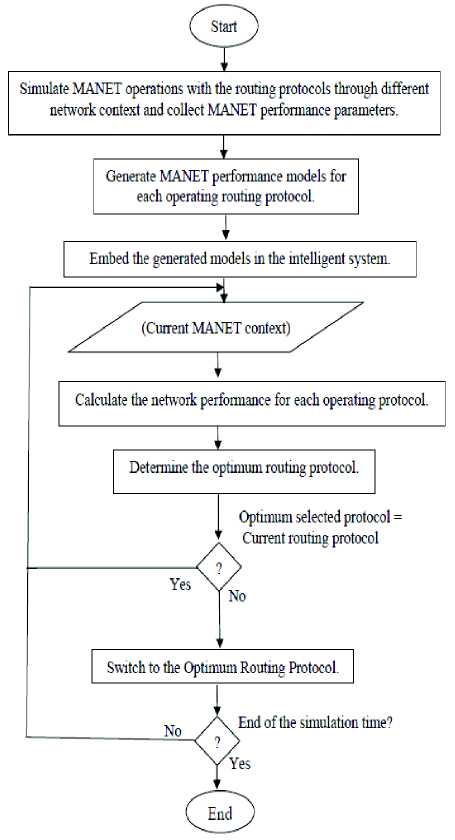
Fig.2. Flowchart for the HYPER-NF-NET routing protocols optimization system design
First, the preparation process simulates the MANET operation with different routing protocols through different network contexts. It then collects and sort out MANET performance parameters. The following MANET context procedure generates the MANET performance models for each operating routing protocol.The system will then be activated by creating the intelligent system (which contains the above model) when it receives the current MANET context. Next, the system will determine the optimal routing protocol after evaluating the network performance as the network operates with each protocol. The optimal optimizer protocol will be checked with the routing protocol (current protocol) on operation. Should the two protocols be different, there will be a switch to the new routing protocol. This process will be repeated for the whole simulation period.
This smart system responds to dynamic changes in the network by continually updating the network context to determine the optimum routing protocol for that specific period. This will benefit the system selecting the different routing protocols during the whole simulation period if necessary. The optimization decision is not based on a single objective, but on an equation. This equation should include the performance parameters that will assist in selecting the optimum routing protocol.
Mobile nodes should not be restricted solely to operate in a specific ad-hoc network context. As the performance degradation of the routing protocol is always linked to changes in the network context, the need for the proposed system increased. In the HYPER-NF-NET routing protocol optimization system, the environment context is taken into account by a system that deduces the most suitable protocol for the observed conditions. The system selects the optimum protocol from the desired protocol list based on the context. HYPER-NF-NET routing protocols optimization system design has four basic components: simulator, modeling, optimizer, and protocol switch. The smart system proposed serves as an overlay protocol that triggers routing protocols based on the needs of the network. This system is an attempt to provide a mechanism for selecting and adapting an automatic network topology-based routing protocol.
-
5.2. System Implementation
The focus is for implementing the intelligent system design. Many changes to the original nodes should be made to create a MANET network with an embedded system. The main contributions in this section are
-
• Incorporating the smart system into the modeller OpnetTM14 .
-
• Implementation of the optimization system for HYPER-NF-NET routing protocols in a case study. Many important industry-relevant changes in the network context are the corporate case study scenario.
-
• Evaluating the proposed system by comparing networks operate with and without the smart system to allow absolute comparison of performance results.
The optimization system for the HYPER-NF-NET routing protocols is tested by simulation through a case study involving various changes in the simulation environment.
-
A. HYPER-NF-NET Optimization System with MANET
A decision should be made on two important queries before implementing the smart system in a wireless MANET environment. These are the queries.
-
• The need for the intelligent unit to be in the decision node, and
-
• The need for the clever unit to be integrated into all MANET nodes.
The next sections will discuss and illuminate these two questions and then decide on the basis of the network during the implementation phase.
-
B. Optimization Unit Encapsulated as an Intelligent Node
In MANETS, the optimum routing from source to destination is done considering the other nodes in the network.Referring the routing protocol decision to one smart node is therefore a central issue, as it should have good knowledge of the entire network environment. It is a single node that decides on the suggested single routing protocol. After consulting all other network nodes, the node will then command the network to operate on a specific protocol. A smart module would be embedded in the decision node (optimization unit) to support the node's decision regarding optimized routing protocol selection.
This node will be called the "Intelligent Node," and with computational and decision-making capabilities it should be able to process the selected optimization technique. The research was designed to optimize the ad-hoc routing protocol to accommodate the entire network with a smart unit. If another factor, such as data rate, is to be considered, the issue of decision will not be important as each individual network node can send their packets at a rate that is comfortable with the node. In this case, the smart unit could be integrated into each network node for an individual decision and each node could determine its optimum data rate.
In the decision-making process in an ad-hoc realistic or emergency situation, as shown in Fig 3, the smart node represents the smart device in the control panel that advises a group of people through their devices. For example, a field of battle where the laptop of the group leader represents the smart node. As known MANET devices have limited battery life [34], by centralizing the optimization process in one smart node, other networks will be relieved from data processing. This will also save MANET nodes ' power and time as it is the duty of the other network nodes to support the decision process by forwarding periodic topology packets to the intelligent node.
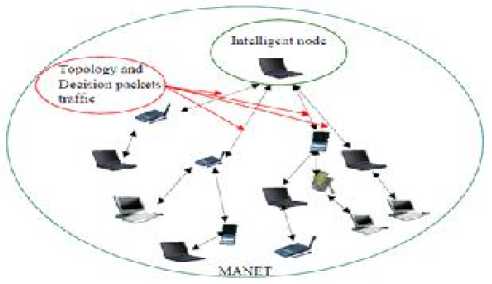
Fig.3. Intelligent node with other MANET nodes
MANET could be part of the Wireless Mesh Network (WMN) to develop the smart system so that the system can alleviate the problem of MANET power consumption and give the smart system a better chance of being implemented in practice[35, 36]. MANET might be one of WMN's end-connected components where the smart system is centralized in the mesh router. MANET nodes could be the MWN client, as shown in Fig 4, where a mesh router connects MANET network to the WMN backbone. In this case, it will be the responsibility of one of the WMN routers (red arrows) to optimize the routing protocol for the entire MANET. In this case, MANET will save more power and time as the WMN router receives information and transmits its decision to / from the MANET nodes.
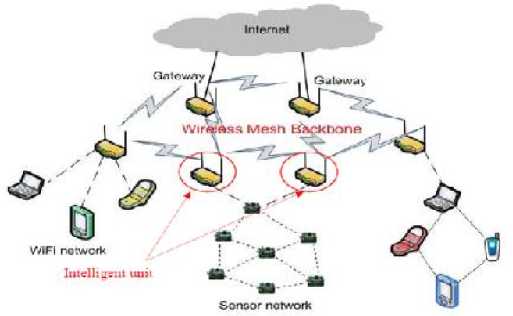
Fig.4. The Wireless Mesh Network (WMN) architecture [3]
-
C. Embedding the Intelligent Unit in Manet Nodes
For reasons such as battery sun-down or network disconnection, the smart node may cease serving the network and processing the smart optimization. This causes the network to suffer a possible one-point failure if the network centralizes the smart unit in just one smart node. Therefore, the smart optimization unit should be able to perform the optimization process in any mobile ad-hoc node with the computing capability. This will reduce the possibility of single-point failure by having other nodes embedded in the network in this intelligent optimization unit. Consequently, if the smart node fails, another nominated node will trigger its smart optimization unit and become the new smart node, providing sufficient redundancy for mission-critical situations.
-
D. Implementation
-
5.3. Hyper-NF-Net-Simulator Results
In order to create the optimization system for HYPER-NF-NET routing protocols, the components discussed above, modeler and optimizer are assembled with the switching technique. The system requires information on network topology. Topology packets are sent to the HYPER-NF-NET routing protocol optimization unit to solve this request problem, as shown in Fig 5. The mobility of the node and the routing protocol in use are included in each topology packet. The optimization block diagram shown in Fig 5 shows the optimization unit embedded in the smart node and represents sequentially the operations of the optimization unit HYPER-NF-NET. The unit consists of the gate of communication, stack of information, optimizer, modeller, and decision-maker.
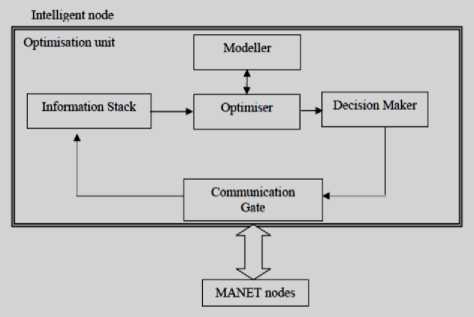
Fig.5. HYPER-NF-NEToptimization unit blocks diagram.
First, the smart node's communication gate will forward the topology packets received from the network nodes to the information stack. The information stack will then deduce the current context of the network (the required parameters are: network size and average mobility).Then the information stack updates the optimizer to the new context. Then, with modelers support, the optimizer generates its solution to predict network performance metrics for each solution for the current context.The protocol's performance metrics not only help the optimizer evaluate the routing protocol in operation, but also determine the optimal routing protocol a sit selects the network's optimal protocol based on its performance.The selected routing protocol should have the best cost of combining the desired data drop parameter, lower delay, lower loads, lower RA and higher performance. Then the decision is fed to the decision-maker. With the new optimum routing protocol, the decision-maker will close the switch time and reference it in the decision packet. Then the decision maker sends the decision packet to the communication gate. Finally, the communication gate will begin feedback to the network nodes on the decision packets.
HNFS (HYPER-NF-NET Simulator) is an event simulator operating in real time. Unlike the popular network simulator NS2 which is console based and uses crisp logic with a script language for simulation, HNFS is a GUI based simulator with programmable parameters, capable of parallel processing in real time using operating system threads. Therefore, the simulator is capable of extensive parallel processing. It employs a knowledge base and an inference engine that get updated constantly, increasing in intelligence over evolution of time. The knowledge base and inference engine work in conjunction with an Artificial Neural Network (ANN) with feedback. The decision making is supported by the neural network and optimization of the solution space is achieved through genetic algorithm. Imprecise and ill-defined parameters are handled effectively through fuzzy logic. The system inherits and upgrades its intelligence through an elaborate process of learning under supervised and controlled conditions using training sets. The system is implemented under Microsoft Windows operating system. The timings derived from the simulator are based on processor clocks and are converted to absolute time for our purposes.
The results of the simulator for various protocols have been explained. The efficiency of the simulators HYPER-NF-NET and NS2 has been compared and the scientific analysis of the results has been given in here.
For HNFS to function with intelligence, training is required under supervised conditions. The training sets are derived from extensive data available from Defense Advanced Research Projects Agency (DARPA) [37, 38] of the US defense department. The experimental data is based on various metrics of MANETs such as:
-
• Node Population
-
• Mobility based on a Stochastic Model
-
• Link States and Route Maps
-
• Power Awareness in the field
-
• Communication Capabilities of the nodes etc.
The tables Table 1 and Table 2 compares proposed simulator Hyper-NF-Net and NS2 and the various protocols which are been simulated and compared with proposed protocol using both NS2 and HYPER-NF-NET.
Table 1. Comparison of various parameters between HYPER-NF-NET and NS2
|
Aspect of Simulator |
HYPER-NF-NET |
NS2 |
|
Simulation Type |
Event + Time Based Pipelined |
Event Based/ Deterministic |
|
Maximum Nodes |
600 |
100 |
|
Protocols implemented |
All known protocols |
Protocol definition required |
|
Parallelism |
Highly parallel |
Sequential |
|
Intelligence |
Based on ANN, FL and GA |
Based on deterministic logic |
|
Network Parameters |
Can handle any parameter |
Limited capabilities |
|
Performance |
Superior to NS2 |
--------- |
|
Event-Timings |
Precise up to 1 µSec |
Precise up to 1 mS |
|
Training |
Required |
Not applicable |
|
Dynamic Parameter Changes |
Allowed |
Not possible |
|
Error Messaging |
Instantaneous |
Deferred |
Table 2. ProtocolDescription
|
Protocol Acronym |
Protocol Description |
|
P1 |
HYPER-NF-NET Proprietary Protocol |
|
P2 |
Pro-active (table-driven) routing |
|
P3 |
Reactive (on-demand) routing |
|
P4 |
Hierarchical routing protocols |
|
P5 |
Hybrid (both pro-active and reactive) routing |
|
P6 |
Multicast routing |
|
P7 |
Flow-oriented routing |
|
P8 |
Backpressure Routing |
-
A. Innards of the Simulator
The available data has been designed into a database which is used by the ANN. The input layer of the ANN takes the parameters such as node count, mobility model, link and route maps etc. and applies the weighted summation on the inputs. The results of the summation go as inputs to the hidden layer which performs a smoothing operation based on Savitsky-Golay filters and applies heuristic search methods to arrive at route solutions. Fuzzy sets are used after smoothing of data to group entities of similarity into a set. All through, the inference engine works in conjunction with the knowledge base through a feedback mechanism to generate solutions that meet a goal function or preset criteria. The goal function is to generate an acceptable solution within a reasonable amount of time and genetic algorithms are pressed into service to pick up the best possible solution.
It has taken 223 cycles of iteration with a dataset of 1200 to achieve acceptable level of intelligence. The simulator works well for a maximum node population of 600 as opposed to 100 in NS2. Beyond this limit, the simulator reaches an oscillatory state where unacceptable multiple solutions emerge with severe inflections in the performance graphs. In order to overcome this limitation, extensive training with at least 50000 datasets will be needed. Link states and route maps become more complicated. The route finding grows almost exponentially with time. This is not considered as serious limitations as practical implementations of MANETs contain no more than a few hundred nodes.
-
B. Results of Route Finding Time-Hyper-Nf-Netvs.Ns2
-
a. Conditions of Simulation
In order to simulate various protocols using NS2 and HYPER-NF-NET , two hundred and fifty nodes were considered in a network and the various parameters of network condition being considered are listed below ;
-
• Network Topology: Mesh Topology
-
• Number of Links: n(n-1)/2, where n is the number of nodes
-
• Number of Nodes in the Network: 250 (31125 links)
-
• Route Congestion Level: 30%
-
• An ad-hoc 10% of the nodes is assumed to go out of communication range intermittently
For comparison, NS2 was configured with scripting to implement all the standard protocols.
The results of simulation are presented in the following pages in the form of graphs with the number of nodes in the X-axis and the Route Finding Time on the Y-axis (graphs 5 to 13). The interpretation of the graphs has been formulated at the end of the section.
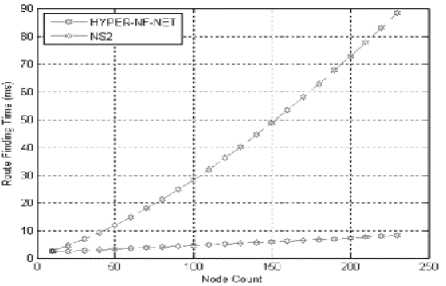
Fig.6. HyperNet-NF-Protocol: 250 Nodes + 30% Route Congestion
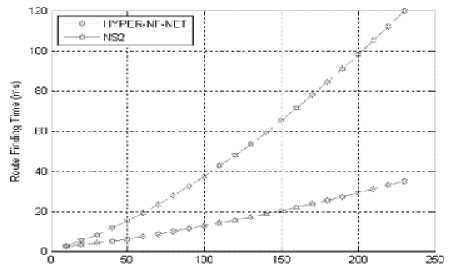
Mode Caueit
Fig.7. Proactive Routing Protocol: 250 Nodes + 30% Route Congestion
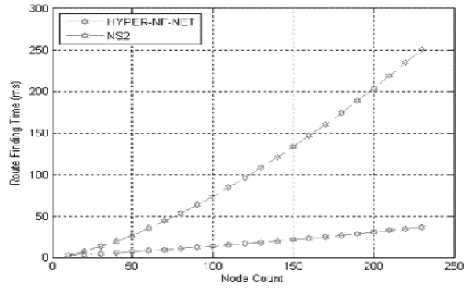
Fig.8. Reactive Routing Protocol: 250 Nodes + 30% Route Congestion
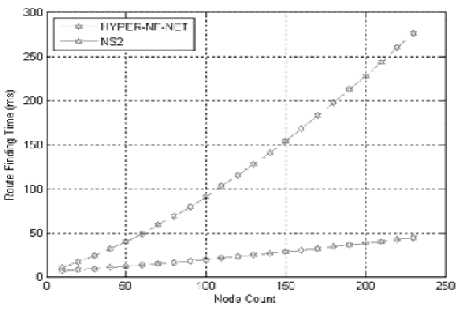
Fig.9. Hierarchical Routing Protocol: 250 Nodes + 30% Route Congestion
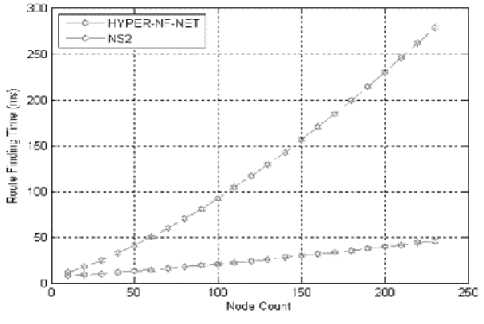
Fig.10. Hybrid Routing Protocol: 250 Nodes + 30% Route Congestion
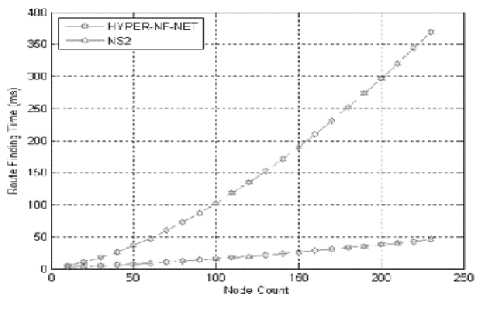
Fig.11. Multicast Routing Protocol: 250 Nodes + 30% Route Congestion
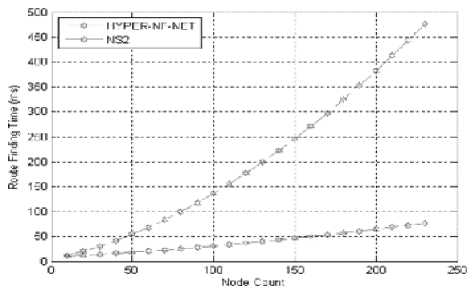
Fig.12. Flow-Oriented Routing Protocol: 250 Nodes + 30% Route Congestion
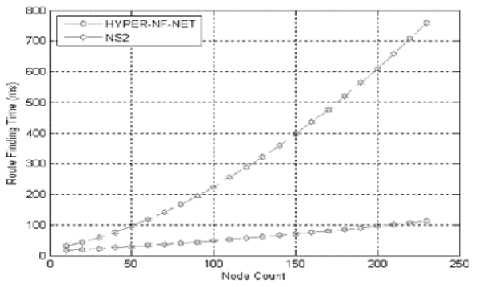
Fig.13. Back-Pressure Routing Protocol: 250 Nodes + 30% Route Congestion
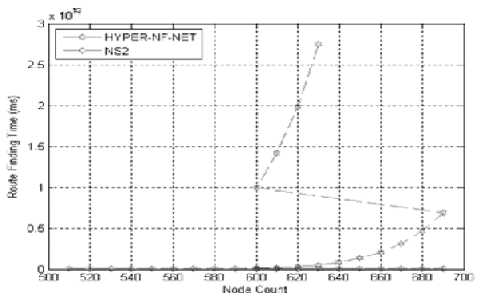
Fig.14. HYPER-NF-NET Protocol: 700 Nodes + 30% Route Congestion (Represents a breakdown and anomalous situation)
-
b. Conclusions on Simulation Results
The conclusions that can be drawn from the above sets of graphs are summarized below:
-
• In all the above cases under standard test conditions, proposed Neuro-Fuzzy-Genetic Simulator has surpassed NS2 Simulator in route finding activity. In fact the performance of HYPER-NF-NET has been remarkable in terms of efficiency.
-
• In almost all the above cases, the route finding time increases almost exponentially with increased node population for a given level of congestion,
-
• Amongst the collection of protocols tested, HYPER-NF-NET Protocol has performed the best within the test environment. The growth rate of route finding time is much less in HYPER-NF-NET simulator as compared to NS2 as is evident from the gradient of the graphs throughout.
-
• The graphs for both the simulators are in proximity to each other with a node population of less than 20. This indicates that there is no superiority in performance of the HYPER-NF-NET over NS2 when only a few nodes are present in the network. This is a reasonable and expected behavior as route finding is a trivial exercise when the number of nodes is few and training the HYPER-NF-NET will not be effective. There won’t be enough information for simulator to build inference rules that can work effectively.
-
• The real advantage of ANN with layered FL and GA comes to surface when the number of nodes is reasonably large.
-
• Conventional simulators like NS2 break down when the number of nodes increase beyond a limit. Proposed simulator can sustain a large node population with adequate training of the ANN. This shows itself obviously in all the graphs. One can also observe from Fig 7.9 that NS2’s behavior becomes erratic after about 600 nodes in the network as multiple solutions are generated. The points of inflexion in graph 7.9 for NS2 prove the point.
-
• The soft-computing technologies, particularly ANN coupled with FL and GA, give a tremendous boost to route finding relating to network problems has been proved.
-
C. Efficiency of Hyper-Nf-Net Vs. Ns2 Basing Above Results
-
a. Conditions of Simulation
In this section the efficiency of the two simulators HYPER-NF-NET and NS2 for the various protocols has been compared. Efficiency of HYPER-NF-NET over NS2 in route finding time is estimated in terms of percentage as follows:
Given that α and βare the route finding times given out by Hyper-NF-Net and NS2 respectively, the Comparative
Performance Factor (CPF) of HYPER-NF-NET over NS2 is defined as:
CPF as % = 100 - (α∗100)
The CPF graphs for the above simulation run are presented through Figs 15 to 22.
Y-axis indicates by what % or amount HYPER-NF-NET is better or superior compared to NS2 in route finding i.e. how fast HYPER-NF-NET determines the route as compared to NS2.
The results of analysis of the graphs are presented thereafter in a section.

Fig.15. CPF of HYPER-NF-NET Protocol: HYPER-NF-NET vs. NS2 implementation
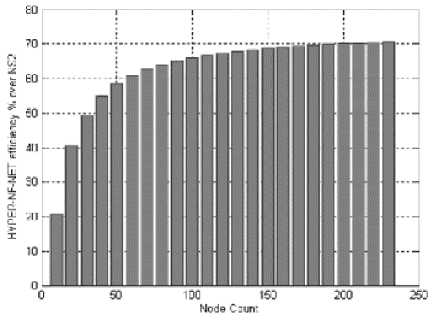
Fig.16. CPF of Proactive Protocol: HYPER-NF-NET vs. NS2 implementation
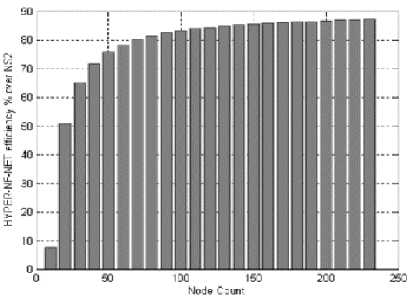
Fig.17. CPF of Reactive Protocol: HYPER-NF-NET vs. NS2 implementation
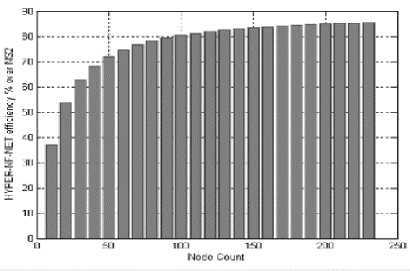
Fig.18. CPF of Hierarchical Routing; HYPER-NF-NET vs. NS2 implementation
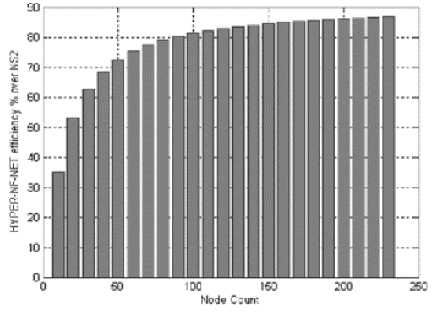
Fig.19. CPF of Hybrid Routing: HYPER-NF-NET vs. NS2 implementation
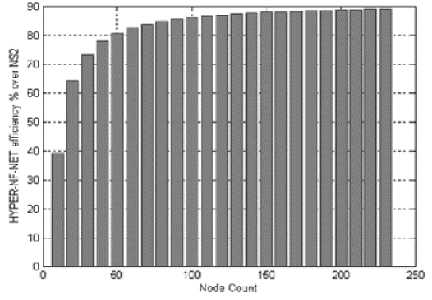
Fig.20. CPF of Multicast Routing: HYPER-NF-NET vs. NS2 implementation
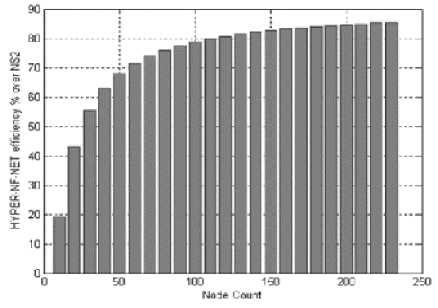
Fig.21. CPF of Flow-Oriented Routing: HYPER-NF-NET vs. NS2 implementation
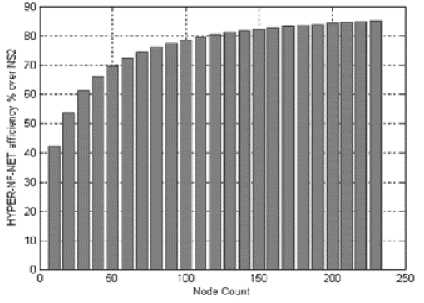
Fig.22. CPF of Back-Pressure Routing: HYPER-NF-NET vs. NS2 implementation
-
b. Conclusions on Efficiency Estimation of HYPER-NF-NET over NS2
Study of the above graphs 15 to 22 lead us to the following conclusions:
-
• Efficiency of proposed simulator improves with increasing node population in comparison to NS2 up to a certain node population estimate at 500.
-
• This fact does not imply that route finding time improves with increasing node population. It only suggests that the improvement is on a scale of comparison with NS2.
-
• As observed before, the efficiency of proposed simulator with NS2 is almost the same with less number of nodes. With increase in the node population proposed simulator’s efficiency improves dramatically owing to the soft-computing ingredients.
-
• It can also be observed that the increase in efficiency shown in the above graphs is not restricted to just one protocol but is evident in all the other protocols experimented.
-
• The percentage of relative efficiency is equal to the height of the graph at specific node-population points on the X-axis.
-
• The ratio α / β in the relation CPF = 100 – ((α / β) * 100) is the ratio of Hyper-NF-Net to NS2 route finding time expressed as percentage. The complimentary percentage i.e. the above value subtracted from 100 represents the CPF. The smaller the second term, the more is the efficiency.
Considering examples (From Fig 15)
If α=100 millisecs and β=200 millisecs, CPF = 50%
If α=50 millisecs and β=200 millisecs, CPF = 75%
This proves that as the route finding time decreases, the comparative efficiency increases.
-
D. Route Finding Time - Hyper-Nf-Net Vs. Ns2 for Various Congestion Levels
-
a. Conditions of Simulation
In this section the results of route finding time for proposed protocol and the simulator for various levels of congestion has been presented which are as given:
-
• Congestion levels 30 to 90% were chosen in three groups [30, 40, 50], [60, 70, 80] and [80, 90] and simulation
was conducted for just one protocol i.e. HYPER-NF-NET.
-
• The node population was restricted to 250.
-
• The results were plotted in different colors to delineate clearly the gradient of the graphs reflecting the route finding efficiency.
The conclusions derived from this exercise are summarized in the sections following Figs 23 to 25.
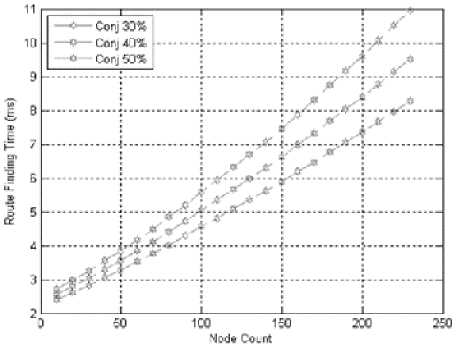
Fig.23. HYPER-NF-NET Protocol with 30, 40 and 50% Route Congestion
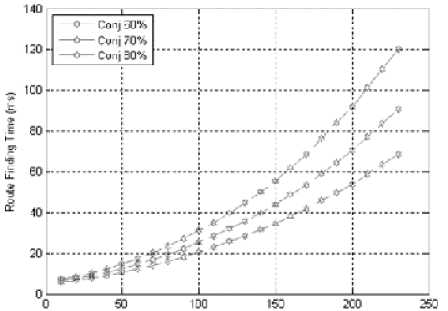
Node Cnunt
Fig.24. HYPER-NF-NET Protocol with 60, 70 and 80% Route Congestion

Fig.25. HYPER-NF-NET Protocol with 80 and 90% Route Congestion
-
b. Conclusions on the Impact of Route Congestion
-
• The values on the Y-axis of the above graphs indicate the route finding time for protocol P1 for various percentages of congestion. The general observation is that the gradient of the graphs become steeper with
increasing congestion. When the congestion increase to a large extent the route finding time increases rapidly.
-
• Extensive experiments indicate a breakdown condition above 90% congestion where the simulator goes into a dormant state.
-
• It is reasonable to assume that other conventional simulators (NS-2) would have gone into a dormant state with much lesser congestion levels. Fig 7.9 also provides the comparison which indicates NS-2 goes to breakdown at around 600 nodes for 30% congestion. As an example, at for a node count of 250 at 90% congestion level the Route Finding Time of HYPER-NF-NET is 1.9 ∗ 104 ms.For an identical scenario with NS2 the route finding time is 2.1 ∗ 109 ms.This illustrates the point under consideration.
-
• The only solution is to avoid congestion since there are simply no routes available.
-
• The shape of the graph (Fig22) indicates a mild exponential growth with positive slopes – approximate monotonic growth with respect to node count. With increase in congestion, the exponential growth is more rapid. This indicates that congestion has a profound effect on the route finding time – more pronounced as the congestion increases.
For a node count of 150 as an example,
At a congestion level 30% the route finding time is 5.9ms
At a congestion level 40% the route finding time is 6.6ms
At a congestion level 50% the route finding time is 7.6ms
Between 30 to 40% the difference in route finding time is 0.7
Between 40 to 50% the difference in route finding time is 1.0
The difference is not linear in nature but tends to be exponential.
-
E. Route Finding Time - Hyper-Nf-Net Vs. Ns2 for Varying Node Population
-
a. Conditions of Simulation
Route finding is a trivial job and the time for finding the route also increases as the number of nodes and congestion increases. For our protocol we have estimated the route finding time for increased number of nodes which are as listed:
-
• The congestion level was pegged at 50%.
-
• Three node populations were taken – [250, 450, and 700].
-
• The simulation was performed for protocol P1 (HYPER-NF-NET).
The conclusions resulting from the generated graphs are summarized in a section following Figs 26, 27 and 28.
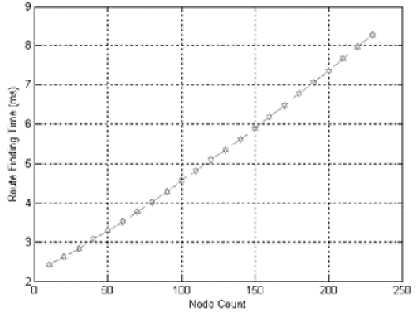
Fig.26. Performance of HYPER-NF-NET (50% Route Congestion and 250 Nodes)
-
b. Conclusions on the Impact of Node Congestion
-
• As confirmed by earlier experiments, increase in node population has a dramatic effect of delaying the route finding time at an exponential rate.
-
• While finding the 1st, 2nd, 3rd derivatives etc., it has been found that the plots are differentiable to any level, indicating a complex relationship between route-finding time and node-population/ route congestion. Beyond a certain level, the graph is expected to become asymptotic in the Y direction.
-
• It can therefore be concluded that a large sized MANET should necessarily be trained with a vast amount of training sets in order to make the route finding more efficient.
-
• Soft-computing ingredients such as ANN, FL and GA reduces route finding time in MANETs has been conclusively proven.
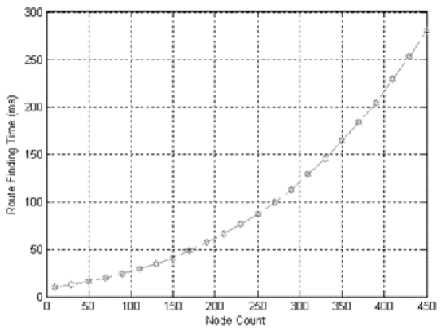
Fig.27. Performance of HYPER-NF-NET (50% Route Congestion and 450 Nodes)

Fig.28. Performance of HYPER-NF-NET (50% Route Congestion and 700 Nodes)
In 7.21, with 50% congestion and 250 nodes, the performance curve of HYPER-NF-NET is almost linear. This is the case when the number of nodes is less.
With 100 nodes, the route finding time is 4.5ms
With 150 nodes, the route finding time is 6.0ms
With 200 nodes, the route finding time is 7.4ms
This establishes the approximate linear relationship.
In Fig 27 where the number of nodes increases to 450, the growth rate is almost exponential. As the number of nodes increases beyond this point, the slope of the performance curve becomes greater.
-
• With 100 nodes, the route finding time is 31.0ms
-
• With 150 nodes, the route finding time is 41.0ms
-
• With 200 nodes, the route finding time is 62.0ms
The difference between a and b is 10.0.
The difference between b and c is 22.0
This establishes the non-linear relationship.
The conclusion is that the number of active nodes has a profound effect on route discovery time.
-
F. Comparison of Hyper-Nf-Net with OLSR, DSR and AODV Under 3 Different Contexts
As a final measure of proving the effectiveness of Hyper-NF-Net Simulator over others, trials were conducted for 4 generic protocols namely HFNET (proposed protocol), OLSR, AODV and DSR under 3 different contexts:
-
• 250 Nodes with 50% route congestion
-
• 300 Nodes with 60% route congestion
-
• 500 Nodes with 70% route congestion
The results are presented in the following 3 graphs (Figs 28, 29 and 30).
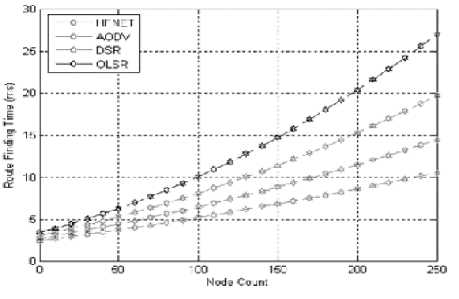
Fig.29. Performance of HYPER-NF-NET Simulator for HFNET, AODV, DSR and OLSR Protocols with 250 Nodes and 50% Route Congestion
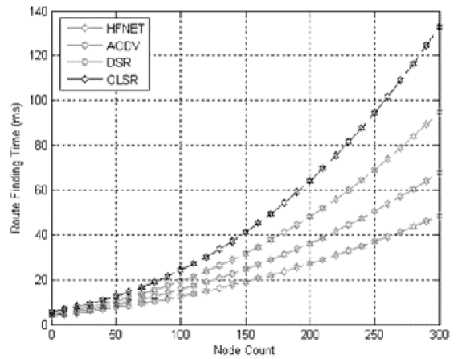
Fig.30. Performance of HYPER-NF-NET Simulator for HFNET, AODV, DSR and OLSR Protocols with 300 Nodes and 60% Route Congestion
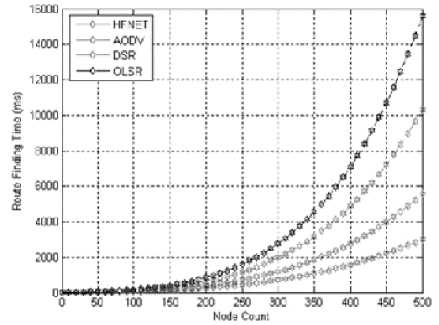
Fig.31. Performance of HYPER-NF-NET Simulator for HFNET, AODV, DSR and OLSR Protocols with 500 Nodes and 70% Route Congestion
The graphs conclusively establish the earlier findings about the effectiveness of soft-computing technologies in the route finding exercise in MANETs – a clear superiority of HYPER-NF-NET as an intelligent simulator over others and the superiority of the associated protocol over the others. With these clear findings, it is possible to draw some scientific conclusions which are presented in the forth coming sections.
It can also be seen that the route finding time increases with increased node population and increased level of congestion. The route finding time is around 10 ms for HYPER-NF-NET simulator with 50 % congestion and 200 nodes and it is around 30 ms with 60% congestion for the same number of nodes. And also it can be seen that the route finding time is around 600 ms for HYPER-NF-NET simulator with 50 % congestion and 500 nodes and it is around 3000 ms with 70% congestion for the same number of nodes.
-
G. Lessons Learnt from Hyper-Nf-Net Performance
The performance of HYPER-NF-NET is superior over NS2 and associated protocol in the proposed research work has better performance over existing protocols. But the performance of any simulator degrades with increased node population and congestion. The following are the points which are to be considered when an intelligent simulator is to be designed and the drawbacks of any intelligent simulator
-
• Training requirement increases with the number of nodes
-
• Training requirement increases with increasing level of route congestion
-
• Performance of the simulator with too few nodes will be poor as adequate training cannot be given despite the fact that route finding could be trivial.
-
• Performance of the simulator with too many nodes will again be poor because adequate training cannot be given
-
H. Final Comments on the Simulator Results
The results evident from the graphs clearly prove the superiority of the HYPER-NF-NET over NS2 in route finding. The deployment of ANN, fuzzy logic and genetic algorithms has resulted in optimal route finding based on goal function, discarding solutions that don’t meet goal criteria. All the timings have been derived from processor clock cycles consumed and converted in absolute time based on processor clock frequency. Timings are therefore accurate to a grain-level of 500 µs.
The results with the author’s simulator is better as the simulator has some unique characteristics
The uniqueness of the Hyper-NF-NET Simulator is
-
• Most of the simulators are deterministic in nature. The proposed simulator works on soft- computing
technologies that gives a human-like intelligence to the system.
-
• The processing of the simulator is based on a knowledge-base and inference engine which is constantly
updated with every route discovery activity.
-
• The simulator can be configured for any type of protocol, whether existing or newly invented.
-
• Hyper-NF-Networks for a large number of nodes (provided adequate training is imparted) where traditional
simulators fail and go into a state of dormancy.
-
• The simulator works on software threads (pipelines that run concurrently in time). This makes the computational operations much faster.
-
• The architecture of the simulator is such that it can be implemented on FPGAs very easily, making practical implementations of the simulator extremely easy.
-
I. Scientific Analysis of the Results
-
• The route finding time is exponentially related to the node population. An empirical estimate based on the obtained results indicates an approximate relationship:
Route Finding Time = k*N^1.87+δ where k is constant in the range 1.1 to 1.9 and δis a constant dependent on route congestion.
For example Take k=1.5, Value of δ is 200 and 750 for 50% and 70 % congestion respectively
For Node population of N=200, Route Finding Time is 1.5 * 20087 µs + 200 µs = 30 ms
For Node population of N=700, Route Finding Time is 1.5 * 209090 µs + 750 µs = 300 ms
Thus Route Finding Time increases with increased node population
-
• Route congestion adversely affects the route finding time by a factor very approximately equal to 1.55p where ‘p’ is the percentage of congestion expressed on a normalized scale of [0 … 1.0].
-
• Amongst the conventional protocols, Proactive protocols perform better than reactive and other types of protocols.
-
• HYPER-NF-NET Protocol (HFNET) (as implemented in HYPER-NF-SIMULATOR) is far superior to all the
others in performance.
• ANN, NF and GA definitely provide a remarkable and commendable superiority in performance of route finding.
• The cumulative effect of node population and route congestion can have very damaging effect on the performance of route finding,
6. Conclusion
An efficient protocol is designed to overcome the limitations of route finding and link establishment in MANET’s. This has been made possible by the application of soft-computing techniques such as artificial neural networks, fuzzy logic and genetic algorithms. Traditional techniques are based on statistical techniques such as regression models and probabilistic methods.
An intelligent system has been designed to select an optimum route for various contexts. The four components namely simulator, modeler, optimizer and protocol switcher are employed to accomplish the intelligent system design. Simulator simulates MANET in different contexts and collects the performance metrics. The performance metrics are delay, load, retransmission attempt, throughput and data drop. It determines representative value for each metrics. The simulation is performed for three protocols namely Ad-Hoc on demand Distance Vector Routing (AODV), Dynamic Source Routing (DSR) and Optimized Link State Routing (OLSR) for all the five metrics. Neuro-Fuzzy (NF) modeler is used to generate performance models for each routing protocol depending on contexts. The HYPER-NF-NET system 3D models represent the network performance according to the network context. Particles Swarm Optimization (PSO) technique is used to optimize MANET performance based on performance models through the optimum routing protocol. Few PSO computer codes will make the PSO optimizer faster than the others in finding the optimal route. Protocol switcher implements the switching among three protocols namely Ad-Hoc on Demand Distance Vector Routing (AODV), Dynamic Source Routing (DSR) and Optimized Link State Routing (OLSR) based on context. An intelligent mode created has knowledge of entire network and takes the responsibility of selecting the desired protocol based on context and performance metric.
Simulation of various protocols like reactive protocol, proactive routing protocol, hybrid routing protocol, multi cast routing protocol, back pressure routing protocol etc. have been performed using NS-2 simulator and the HYPER-NF-NET simulator for different contexts. The main context parameters considered are the number of nodes, node mobility and extent of congestion. Simulations are also conducted for HYPER-NF-NET (HFNET) protocol and three popular protocols AODV, DSR and OLSR with the HYPER-NF-NET simulator for various levels of congestion and variable node population. Cost minimization measurements are used as a comparison tool to evaluate the performance of the HYPER-NF-NET optimization system and associated protocol HFNET with the three protocols.
It can be seen from the simulation results that the route finding time using the HYPER-NF-NET simulator is 20% to the routing finding time using NS-2 simulator. It is also seen from the simulation results that the HYPER-NF-NET protocol performance is better compared to AODV, DSR and OLSR routing protocols for different node population and various degree of congestion. The simulation results showcase a superiority of HYPER-NF-NET simulator over NS-2 and associated HFNET protocol over other existing protocols.
Список литературы Neuro Fuzzy Model Based Routing Protocol in Mobile Ad-Hoc Networks
- T. Larsson and N. Hedman, "Routing Protocols in Wireless Ad-hoc Networks--A Simulation Study," master's thesis at Lulea University of Technology, Stockholm, 1998. Available online.
- International Conference on Simulation Tools and Techniques for Commuications, Networks and Systems & Workshops. Proceedings of the 1st international conference on Simulation tools and techniques for communications, networks and systems & workshops Marseille, France .Article No.: 36, Year of Publication: 2008 .ISBN:978-963-9799-20-2. Elmar Schoch, Michael Feiri, Frank Kargl, Michael Weber. Ulm University, Ulm, Germany
- L. A. Zadeh, "Fuzzy logic, neural networks, and soft computing," Communications of the ACM, vol. 37, no. 3, 1994, pp. 77–84.
- Distributed Fuzzy Score-Based Clustering Algorithm for Mobile Ad Hoc Networks December 09-December 12 ISBN: 978-0-7695-3473-2 : Sahar Adabi ,Sam Jabbehdari ,Ali Rezaee, Sepideh Adabi
- B. Seet, B. Lee, and C. Lau, “Optimisation of route discovery for dynamic source routing in mobile Ad hoc networks,” IET Journals, Electronics Letters, vol. 39, issue 22 , pp. 1606–1607, 2003.
- C. K. Toh, H. Cobb, and D. A. Scout, “Performance evaluation of battery-life aware routing schemes for wireless Ad hoc networks,” IEEE International Conference on Communication , ICC 2001, vol. 9, pp. 2824–2829, 2001.
- D. Kim, J. J. Garcia-Luna-Aceves, K. Obraczka, J. Cano, and P. Manzoni, “Routing mechanisms for mobile Ad hoc networks based on the energy drain rate,” IEEE Transactions on Mobile Computing, vol. 2, no. 2, pp.161–173, 2003.
- (E-book) W. Fritz, “Intelligent systems and their societies,” 1997, [online], available on: http://www.intelligentsystems.com.ar/intsyst, [accessed on Feb. 24, 2010].
- D. B. Johnson, D. A. Maltz, and Y. Hu, “The Dynamic Source Routing protocol (DSR) for mobile Ad-Hoc networks for IPv4”, IETF RFC 4728, 2007.
- C. E. Perkins, E. M. Royer, S. R. Das, and M. K. Marina, “Performance comparison of two On Demand routing protocols for Ad-Hoc networks, IEEE Personal Communications, vol. 8, no. 1, 2001,pp. 16–28.
- T. Clausen and P. Jacquet, “Optimised Link State Routing protocol (OLSR),” Project Hipercom, INRIA, IFTF RFC 3626, 2003.
- Z. Guo and B. Malakooti, “Delay prediction for intelligent routing in wireless networks using neural networks,” Proceedings of the 2006 IEEE International Conference on Networking, Sensing and Control, ICNSC '06, pp. 625–630, 2006.
- L. Layuan, L. Chunlin, and Y. Peiyan, “Performance evaluation and simulations of routing protocols in Ad hoc networks,” Computer Communications, vol. 30, issue 8, pp. 1890–1898, 2007.
- S. Jiang, Y. Liu, Y. Jiang, and Q. Yin, “Provisioning of adaptability to variable topologies for routing schemes in MANETs,” IEEE Journal on Selected Areas in Communications, vol. 22, issue 7, pp. 1347–1356, 2004.
- A. N. Al-Khwildi and H. S. Al-Raweshidy, “A proficient path selection for wireless Ad hoc routing protocol,” The 8th International Conference on Advanced Communication Technology, ICACT 2006, vol. 1, pp. 599–604, 2006.
- T. Mukherjee, S. K. S. Gupta, and G. Varsamopoulos “Energy optimisation for proactive unicast route maintenance in MANETs under end-to-end reliability requirements,” Performance Evaluation, vol. 66, pp. 141–157, 2009.
- A. Mukhija and R. Bose, "RRP - A bandwidth-efficient routing protocol for mobile Ad hoc networks," Proceedings of the 2nd International Information and Telecommunication Technologies Symposium (I2TS 2003), Florianopolis, Brazil, 2003.
- Y. Lu, W. Wang, Y. Zhong, and B. Bhargava, “Study of distance vector routing protocols for mobile Ad hoc networks,” Proceedings of the First IEEE International Conference on Pervasive Computing and Communications, PerCom 2003, pp.187–194, 2003.
- M. R. Pearlman and Z. J. Haas, “Determining the optimal configuration for the zone routing protocol,” IEEE Journal on Selected Areas in Communications, vol. 17, issue 8, pp. 1395–1414, 1999.
- I. Ajbar and D. Perkins, “Evaluating mobile Ad hoc networks: A performance index and statistical model,” IEEE Proceedings Conferences of 16th International Conference on Computer Communications and Networks, ICCCN 2007, pp. 284–290, 2007.
- A. Jindal, and K. Psounis, “Contention-aware performance analysis of mobility-assisted routing,” IEEE Transactions on Mobile Computing, vol. 8, no. 2,2009, pp.145–161.
- A. Nogueira, P. Salvador, and R. Valadas, “Joint modeling of MANET characteristics for QoS prediction,” The 12th IEEE Symposium on Computers and Communications, ISCC 2007, 2007, pp. 429–435.
- B. Zhou, A. Marshall, J. Wu, T. H. Lee, and J. Liu, “A cross-layer route discovery framework for mobile Ad-Hoc networks,” EURASIP Journal on Wireless Communications and Networking, issue 5, 2005, pp. 645–660.
- A. Malatras, G. Pavlou, and S. Sivavakeesar, “A programmable framework for the deployment of services and protocols in mobile Ad hoc networks,” IEEE Transactions on Network and Service Management,vol. 4 , issue 3, pp.12–24, 2007.
- “Programmable Ad hoc Network (PAN) project,” EPSRC, Grant Reference: GR/S02129/01,[Online], available on: http://personal.ee.surrey.ac.uk/Personal/G.Pavlou/projects/PAN, [accessed on Sep. 19, 2010].
- H. Martinez-Alfaro and M. A. Hernandez-Vazquez, “DSR protocol scalability optimisation in mobile Ad-Hoc networks with ANFIS,” IEEE International Conference on Systems, Man and Cybernetics,vol. 4, 2003,pp. 3414–3419.
- F. Dai and J. Wu, “Proactive route maintenance in wireless Ad hoc networks,” IEEE International Conference on Communications, ICC 2005, vol. 2, pp. 1236–1240, 2005.
- T. Shih, “Particle Swarm Optimisation algorithm for energy-efficient cluster-based sensor networks,” IEICE Transactions on Fundamentals of Electronics, Communications and Computer Sciences, vol. E89–A, no. 7,2006, pp. 1950–1958.
- S. Rajagopalan and C. Shen, “ANSI: A swarm intelligence-based unicast routing protocol for hybrid ad hoc networks,” Journal of Systems Architecture, vol. 52, issue 8, pp. 485–504, 2006.
- I. Bar-David, “Communication under the Poisson regime,” IEEE Transaction of Information Theory, vol. 15, 1969,pp. 31–37.
- T. Camp, J. Boleng, and V. Davies, “A survey of mobility models for Ad-Hoc network research,” Wireless Communication and Mobile Computing, WCMC, Special issue on Mobile Ad-Hoc Networking: Research, Trends and Applications, vol. 2, no. 5, 2002pp. 483–502.
- H. Freudenthal, “The concept and the role of the model in mathematics and natural and social sciences,” pp. 8-9, D. Reidel Publishing Company, Netherlands, 1961.
- L. K. Hansen and P. Salamon, ”Neural network ensembles,” IEEE Transactions on Pattern Analysis and Machine Intelligence, vol. 12, no. 10, 1990,pp. 993–1001.
- S. Sesay, Z. Yang, and J. He, “A survey on mobile Ad-Hoc wireless network,” Information Technology Journal, vol. 3, no. 2, 2004,pp. 168–175.
- “SWIM (Seamless Wireless Mesh network) project,” Nanjing University, [Online], available on: http://cs.nju.edu.cn/lwz/swim/swim.html, [accessed on Aug. 11, 2010].
- X. Wang, “Security Mechanisms in Wireless Mesh Networks (WMNs),” Iowa State University, [Online], available on: http://www.cs.iastate.edu/~jxiawang/research.htm, [accessed on Aug. 11, 2010].
- “Defense Advanced Research Projects Agency,” DARPA, [Online], available on: http://www.darpa.mil [accessed Sep. 20, 2010].
- David A. Beyer, “Accomplishments of the DARPA SURAN Program”, Military Communication Conference, MILCOM’90, IEEE Conference Record, ’A New Era,’ vol. 2,1990, pp. 855–862.

